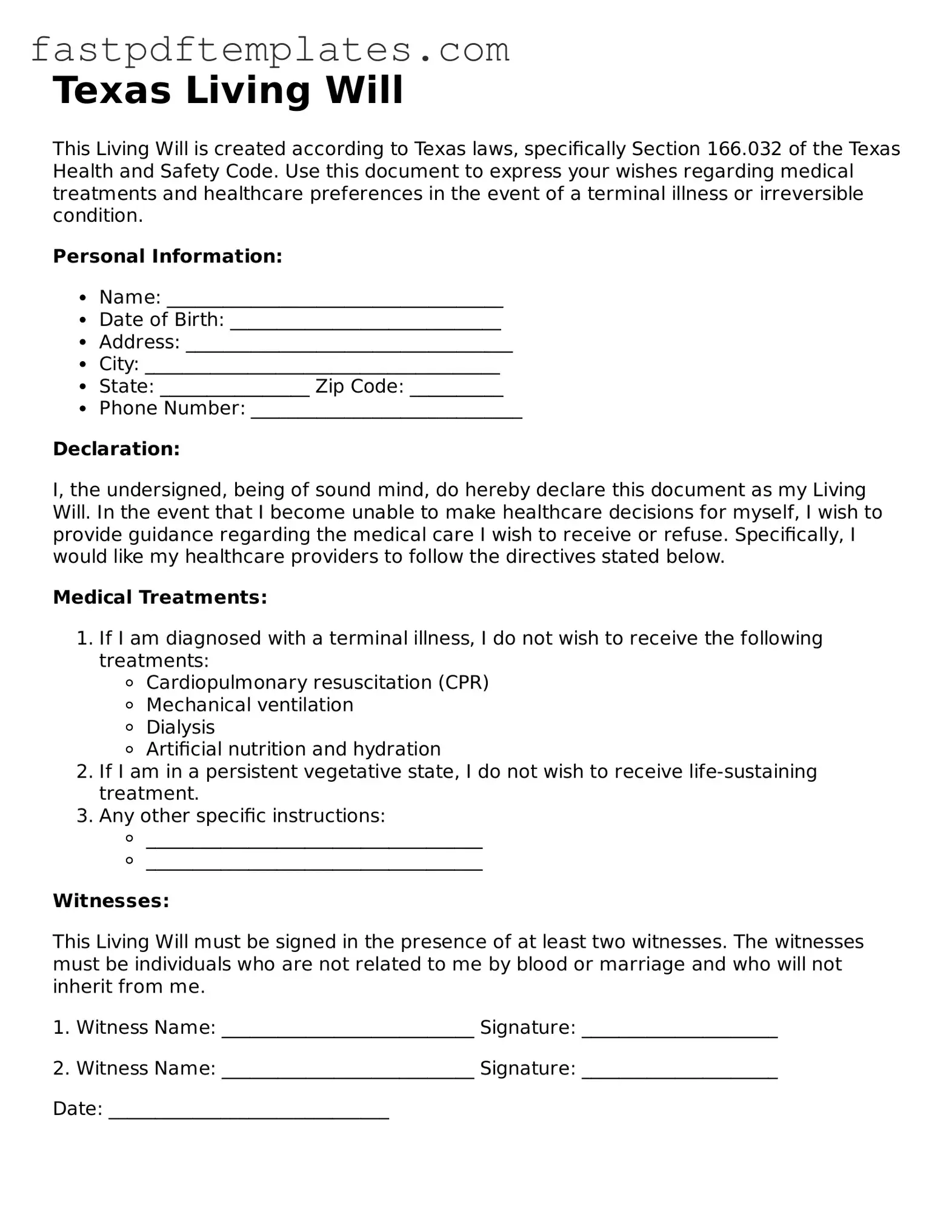Texas Living Will
This Living Will is created according to Texas laws, specifically Section 166.032 of the Texas Health and Safety Code. Use this document to express your wishes regarding medical treatments and healthcare preferences in the event of a terminal illness or irreversible condition.
Personal Information:
- Name: ____________________________________
- Date of Birth: _____________________________
- Address: ___________________________________
- City: ______________________________________
- State: ________________ Zip Code: __________
- Phone Number: _____________________________
Declaration:
I, the undersigned, being of sound mind, do hereby declare this document as my Living Will. In the event that I become unable to make healthcare decisions for myself, I wish to provide guidance regarding the medical care I wish to receive or refuse. Specifically, I would like my healthcare providers to follow the directives stated below.
Medical Treatments:
- If I am diagnosed with a terminal illness, I do not wish to receive the following treatments:
- Cardiopulmonary resuscitation (CPR)
- Mechanical ventilation
- Dialysis
- Artificial nutrition and hydration
- If I am in a persistent vegetative state, I do not wish to receive life-sustaining treatment.
- Any other specific instructions:
- ____________________________________
- ____________________________________
Witnesses:
This Living Will must be signed in the presence of at least two witnesses. The witnesses must be individuals who are not related to me by blood or marriage and who will not inherit from me.
1. Witness Name: ___________________________ Signature: _____________________
2. Witness Name: ___________________________ Signature: _____________________
Date: ______________________________
